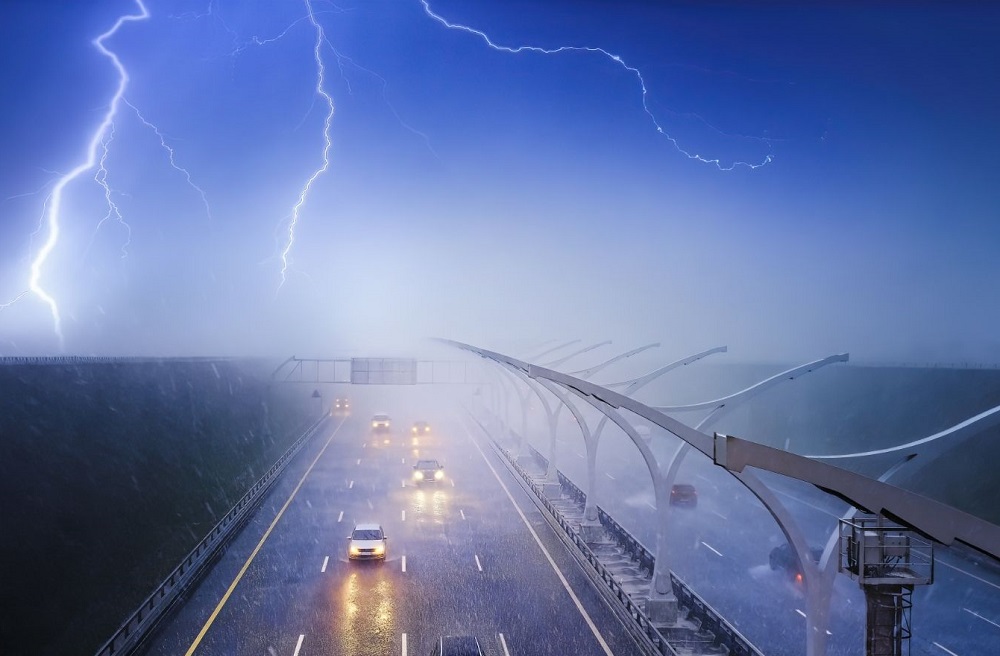Have you ever pondered the sheer power of nature? Imagine a landscape darkened by ominous clouds, a bolt of lightning piercing the sky, and you’re ensconced within the metal confines of your car, wondering, “What would happen if lightning struck my vehicle?” It’s a thought that flits through the mind of many during a tempest, igniting curiosity about the intersection of nature’s ferocity and modern engineering. Let’s unravel this fascinating scenario.
First, it is essential to note that cars, largely constructed of metal, provide an excellent shield against lightning strikes. The phenomenon is rooted in physics—metal serves as a conductor. When a vehicle is struck, the metal structure allows the electrical discharge to travel around the exterior before dissipating into the ground. This remarkable property creates a safety zone within the car, safeguarding its occupants.
To paint a vivid picture, picture a lightning bolt seeking the shortest path to the Earth’s surface. The car, with its robust metallic frame, becomes a conduit for this electrical event. Instead of penetrating the interior, the lightning’s current travels along the car’s outer surface, preserving the sanctum inside. This protective effect is often referred to as the “Faraday Cage” principle. The concept, named after the 19th-century scientist Michael Faraday, illustrates how a conductive enclosure can shield its interior from external electric fields.
But as fascinating as this may sound, the scenario is not devoid of potential risks. While the passengers are generally shielded from harm, the vehicle itself may sustain damage. Lightning strikes can wreak havoc on a car’s electronics. Modern vehicles, laden with sophisticated electrical systems ranging from navigation aids to safety features, could be compromised if struck. The result? A post-lightning vehicle might find itself facing significant repair costs or, in some cases, complete replacement.
As we delve deeper, it’s critical to understand how often such encounters occur. The National Weather Service estimates that approximately 25 million lightning strikes occur annually in the United States alone. Intriguingly, despite the multitude of strikes, only a small fraction of incidents involve vehicles. This relatively low occurrence creates a false sense of security for drivers. Even so, it’s essential to recognize that while the likelihood may be low, the power of lightning cannot be overstated.
Moreover, the experience of being struck by lightning in your car can be surreal. During the moment of impact, occupants may hear a sharp crack and feel a jolt, akin to a minor earthquake. It’s a startling experience that can lead to confusion and anxiety. Following a strike, it’s crucial for drivers to remain vigilant. Checking for signs of damage, including malfunctioning electronics or unusual behavior from the car’s systems, should be a priority. A vehicle whose safety features are compromised could pose a significant risk on the road.
To augment the layers of this discourse, let’s explore precautionary measures. If you find yourself on the road during a thunderstorm, it’s advisable to seek shelter—preferably in a garage or building if feasible. If caught in the open, pull over to a safe area, keep your seatbelt on, and avoid touching metal components of the vehicle. Maintain a calm demeanor. Reassurance is often the remedy in the face of nature’s intimidating spectacle.
Now, while the protective elements of vehicles are compelling, this doesn’t mean drivers are entirely invulnerable. Other hazards accompany thunderstorms, such as sudden downpours and gusty winds. These factors can create perilous driving conditions that demand respect. Lightning may not be the sole threat on a stormy day. Remember, visibility and road conditions can deteriorate rapidly.
Shifting our focus, let’s delve into the psychological effects of being in a vehicle struck by lightning. It’s an experience that can leave lasting impressions. Many might recount feelings of vulnerability, emphasizing the seeming fragility of human life in the face of nature’s wrath. Thoughts surrounding fate and survival may swirl, leading many to reassess their perceptions of safety in vehicles and the broader implications of climate’s volatility.
As we contemplate this phenomenon, the dialogue must also transcend beyond individual experiences. Lightning strikes contribute to broader ecological narratives. These discharges can spark wildfires, affect local wildlife, and play a role in the nitrogen cycle. Understanding lightning’s role in the ecological web can inspire awe and foster a greater appreciation for the interconnectedness of our environment.
In conclusion, while the fear of being struck by lightning while in a car is palpable, the engineering marvels of modern vehicle design provide a protective fortress against nature’s electrifying displays. Curiosity about this phenomenon can prompt discussions about the interplay between humanity and weather patterns, grounding us in a sense of responsibility towards the environment. As we navigate the highways of life, let’s not only cultivate respect for the elements but also nurture a greater understanding of our vulnerabilities and the incredible feats of engineering that shield us. The next time the skies darken, you may just find yourself with a renewed perspective, a blend of respect and intrigue for both nature and the vehicles that traverse through its tempestuous grasp.
